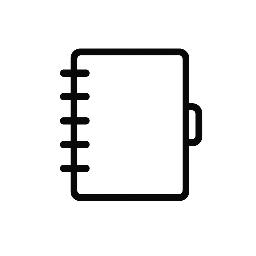Section 321 customs clearance allows shipments valued at $800 or less to enter the United States duty-free and with simplified processing. This provision speeds up the clearance process by exempting low-value shipments from formal customs requirements and duties.
Businesses and individuals who frequently import small parcels benefit from this rule by reducing delays and costs at the border. Understanding the limits and requirements of Section 321 is essential for effective logistics planning and compliance.
By using Section 321 clearance correctly, importers can streamline their supply chain and avoid unnecessary paperwork. This article explains how Section 321 works and what to watch for when shipping low-value goods internationally.
Understanding Section 321 Customs Clearance
Section 321 allows importers to bring in low-value goods without paying duties or going through full customs procedures. The process has specific requirements and offers advantages for both businesses and individual shippers.
Definition and Purpose
Section 321 is a provision under U.S. customs law that enables goods valued at $800 or less to enter the country duty-free. It was designed to streamline shipments and reduce administrative costs for low-value imports.
This clearance method bypasses traditional import documentation and tariffs. It encourages faster processing by the U.S. Customs and Border Protection (CBP), expediting delivery for small shipments.
The primary goal is to simplify cross-border trade of small parcels, benefiting e-commerce sellers, drop shippers, and consumers ordering goods internationally.
Eligibility Criteria
Goods qualify under Section 321 if their total value is $800 or less per shipment. The shipment must be sent by one person directly to another without any commercial invoice or formal customs entry.
Non-commercial shipments, including personal gifts or samples, may also qualify if they meet value limits. Shipments that are part of larger bulk orders need to be declared separately.
Prohibited items, restricted merchandise, or goods subject to quotas do not qualify. Additionally, multiple packages shipped together that exceed the threshold are not eligible.
Key Benefits
Section 321 eliminates duties and import taxes on eligible shipments, lowering costs for importers. This makes it attractive for small businesses and individuals shipping frequently.
Customs clearance is faster because shipments do not require formal entry or detailed documentation. This reduces delays at ports and improves overall supply chain efficiency.
The process also lowers administrative burden by simplifying paperwork. Businesses save time and resources by avoiding complex customs procedures on low-value goods.
Section 321 Customs Clearance Process
The Section 321 customs clearance involves specific documentation, precise filing steps, and often requires expert assistance. Each part ensures shipments valued under $800 meet U.S. Customs and Border Protection (CBP) rules efficiently.
Documentation Requirements
Key documents for Section 321 clearance include the invoice, packing list, and proof of shipment value. The invoice must clearly show the total value and a detailed description of each item. The value should not exceed the $800 threshold to qualify.
No formal entry paperwork or duties are required, but accuracy in item descriptions is critical to avoid delays or penalties. Importers should retain all related records for five years in case of audits or inquiries.
Using Harmonized Tariff Schedule (HTS) codes is optional but recommended for better classification and smoother processing by customs.
Filing Procedures
For Section 321 shipments, filings are typically made electronically through the Automated Broker Interface (ABI) or the Entry Summary System. The filing includes submitting shipment details and proof that the shipment qualifies under Section 321.
The CBP requires importers or their agents to provide the shipment’s value, country of origin, and a brief description. Shipments under Section 321 are usually exempt from formal entry and duties, speeding up clearance.
It is important to ensure filing accuracy to prevent shipment holds or fines. Incorrect or incomplete filings can trigger inspections or require additional documentation.
Role of Customs Brokers
Customs brokers play a critical role in facilitating Section 321 clearance, especially for importers unfamiliar with CBP requirements. They prepare and submit the required electronic filings on behalf of importers.
Brokers ensure compliance by verifying shipment documentation and accuracy of the information submitted. They also communicate with CBP to resolve any clearance issues that arise.
Using a customs broker can reduce delays and help avoid costly errors. Brokers often have software tools to transmit data efficiently and stay updated on regulatory changes impacting Section 321 shipments.


Leave a Reply